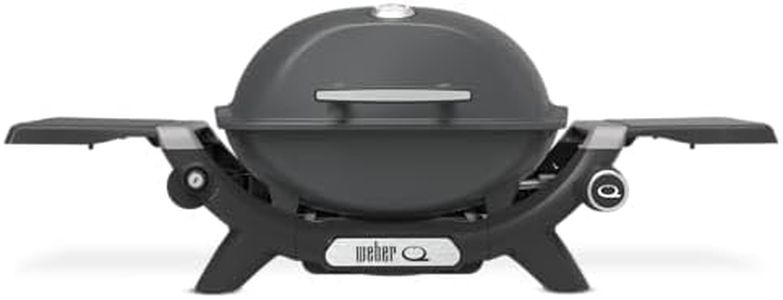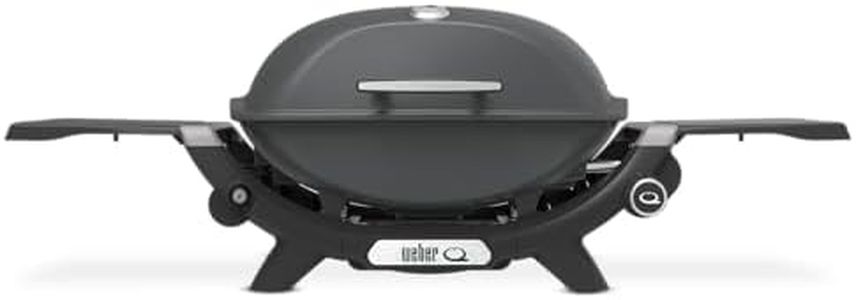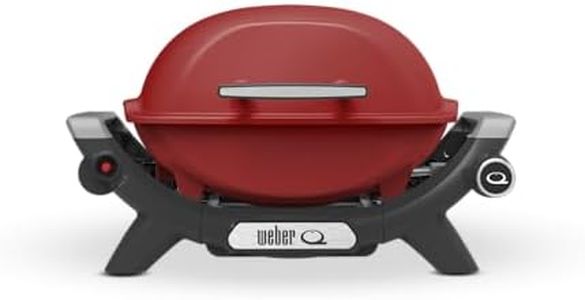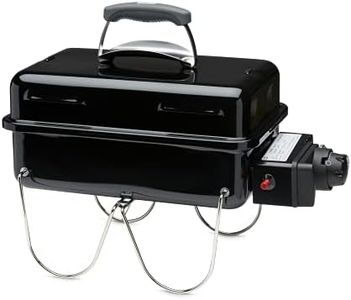We Use CookiesWe use cookies to enhance the security, performance,
functionality and for analytical and promotional activities. By continuing to browse this site you
are agreeing to our privacy policy
5 Best Portable Gas Grills
From leading brands and best sellers available on the web.Buying Guide for the Best Portable Gas Grills
Choosing the right portable gas grill can make your outdoor cooking experiences more enjoyable and convenient. It's important to focus on the factors that matter most for portability, cooking needs, ease of use, and the kind of environments where you'll be using your grill. By understanding the key specifications, you can select a grill that fits your lifestyle, whether you're tailgating, camping, or just grilling on your balcony.Cooking Surface AreaCooking surface area tells you how much food you can cook at one time. It's usually measured in square inches. If you often cook for several people or like to grill a variety of foods at once, a larger cooking area is more practical. Smaller grills, with less than 200 square inches, are perfect for one or two people and are very portable. Medium ones, around 200–300 square inches, suit small families or groups. Consider how many people you usually cook for and whether you prefer to keep your grill lightweight or want more space for food.
BTU OutputBTU stands for British Thermal Units and measures the amount of heat the grill can produce per hour. Higher BTU usually means more cooking power, leading to faster and hotter grilling. Low-BTU grills (under 8,000 BTUs) are good for slow or gentle cooking and use less fuel, whereas higher BTU grills (above 12,000) heat up faster and maintain high temperatures, ideal for searing meats. Think about what you like to cook—if it's mainly veggies, fish, or pre-cooked items, lower BTU is fine, but for steaks or searing, you'll want something more powerful.
Portability/WeightPortability is all about how easy it is to carry and transport your grill. Weight is key here: lighter grills (under 20 pounds) are great for hiking, trips, or frequent moving, but might offer fewer features and a smaller grilling surface. Heavier ones (over 30 pounds) provide more stability and cooking room but can be harder to transport. Pay attention to handles, wheels, and folding legs—a design that includes these will make moving and storage much easier.
Construction MaterialThe material of a grill affects its durability, heat retention, and ease of cleaning. Most portable grills are made from stainless steel, cast iron, or coated aluminum. Stainless steel resists rust and is easy to clean, making it suitable for frequent use outdoors. Cast iron holds heat well but is heavier and needs care to avoid rust. Aluminum is light and resists rust but may not stay hot as long. If you plan to use your grill often, especially in humid conditions, prioritize stainless steel or aluminum. For optimal heat, consider cast iron but be aware of its extra weight.
Ignition SystemThe ignition system is how the grill starts. Many have a push-button or piezo ignition, making lighting fast and convenient—good for beginners or for quick setups. Some require manual lighting with a match or lighter, which is fine for occasional use but can be inconvenient during windy conditions. If you want reliability and ease, choose an automatic ignition feature.
Fuel Source CompatibilityPortable gas grills typically use small, disposable propane canisters or sometimes connect to larger propane tanks. Some models can adapt to both. Smaller canisters are easier to carry for trips but last a shorter time, while larger tanks last longer but add weight. Think about how long you usually grill and if you'll have easy access to replacements—choose something that fits your typical use.
Ease of CleaningGrills that are easy to clean save you time and frustration. Removable drip trays and non-stick cooking racks can make cleanup faster. If you'll be grilling often or taking your grill to places where washing is hard, features like dishwasher-safe parts or removable grates can make a big difference.




